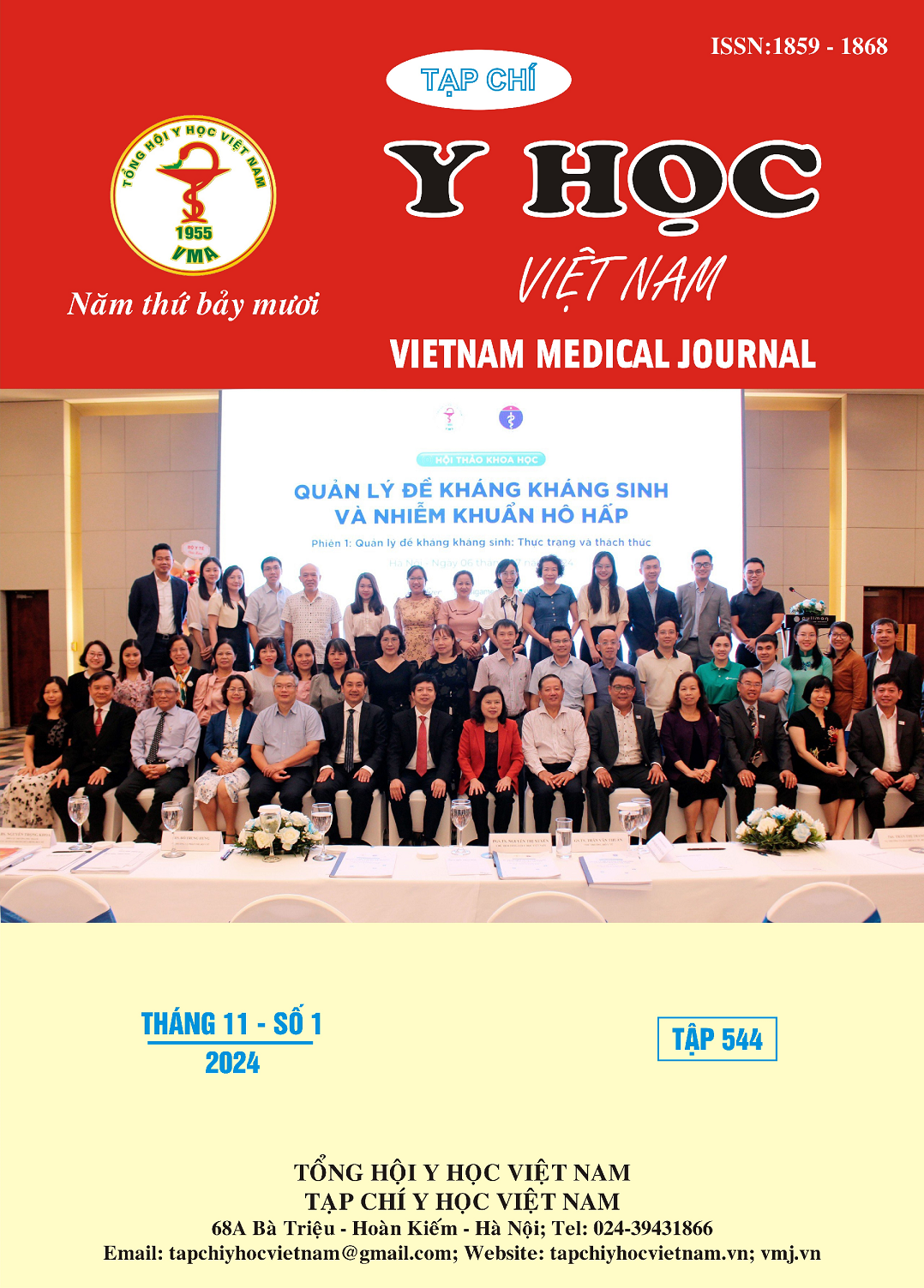THE RELATIONSHIP BETWEEN ATHEROGENIC INDEX OF PLASMA (AIP) AND OBESITY
Main Article Content
Abstract
Objective: To investigate the relationship between AIP, blood lipids and obesity. Subject and method: Cross-sectional descriptive study, conducted on 1307 people who came for regular health check-ups at Central Military Hospital 108 from January 1, 2023 to December 31, 2023. Blood lipid components were quantified by photometric method and AIP was calculated as log10 (TG/HDL-C). Results: The AIP index in the obese group was higher than the non-obese group, the difference was statistically significant (p=0.000). There was a strong positive correlation between AIP and BMI (r=0.528p=0.000). The fourth and third AIP quartiles had a higher risk of obesity than the first AIP quartile with OR of 4.86 and 2.36, respectively (p<0.01) after adjusting for the variables age, gender, systolic blood pressure, diastolic blood pressure, glucose, cholesterol, LDL-C. Area under the ROC curve of AIP in predicting obesity risk was 0.765 (0.736-0.794), cutoff point of 0.1247, sensitivity of 74% and specificity of 70%. Conclusion: The AIP index was a biomarker with moderate prognostic value in predicting the risk of obesity with an area under the ROC curve of 0.765 (0.736-0.794), sensitivity of 74% and specificity of 70%. AIP was strongly positively correlated with BMI (r=0.528, p<0.01).
Article Details
Keywords
Obesity, Atherogenic index of plasma, Blood lipid components.
References
2. Obesity and overweight. Accessed July 12, 2024. https://www.who.int/news-room/fact-sheets/detail/obesity-and-overweight.
3. Bộ Y tế (2021), Công bố kết quả Tổng điều tra Dinh dưỡng năm 2019-2020, https://moh. gov.vn/tin-noi-bat/-/asset_publisher/ 3Yst7YhbkA5j/content/bo-y-te-cong-bo-ket-qua-tong-ieu-tra-dinh-duong-nam-2019-2020.
4. Dobiásová M. [AIP--atherogenic index of plasma as a significant predictor of cardiovascular risk: from research to practice]. Vnitr Lek. 2006; 52(1):64-71.
5. Zhang JS, Yeh WC, Tsai YW, Chen JY. The Relationship between Atherogenic Index of Plasma and Obesity among Adults in Taiwan. Int J Environ Res Public Health. 2022;19(22):14864. doi:10.3390/ijerph192214864
6. Zhu X, Yu L, Zhou H, et al. Atherogenic index of plasma is a novel and better biomarker associated with obesity: a population-based cross-sectional study in China. Lipids Health Dis. 2018;17(1):37. doi:10.1186/s12944-018-0686-8
7. Third Report of the National Cholesterol Education Program (NCEP) Expert Panel on Detection, Evaluation, and Treatment of High Blood Cholesterol in Adults (Adult Treatment Panel III) final report. Circulation. 2002;106(25):3143-3421.
8. Wong ND, Wilson PW, Kannel WB. Serum cholesterol as a prognostic factor after myocardial infarction: the Framingham Study. Ann Intern Med. 1991;115(9):687-693. doi:10.7326/0003-4819-115-9-687


